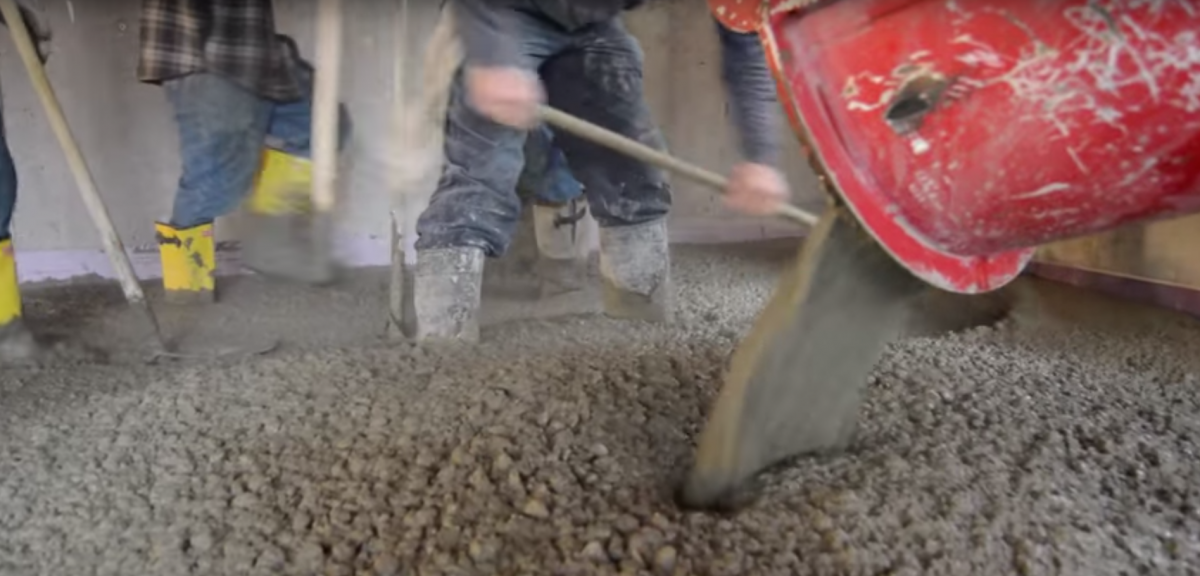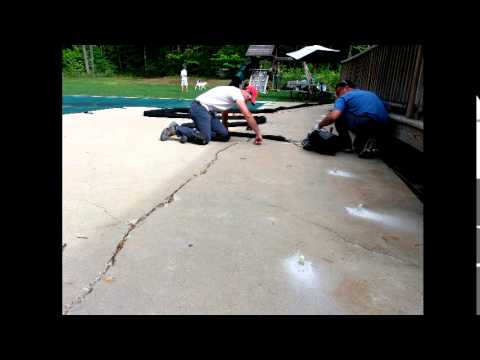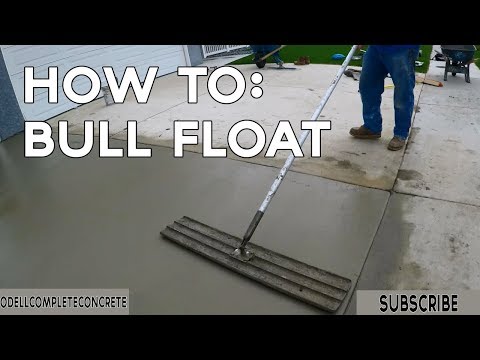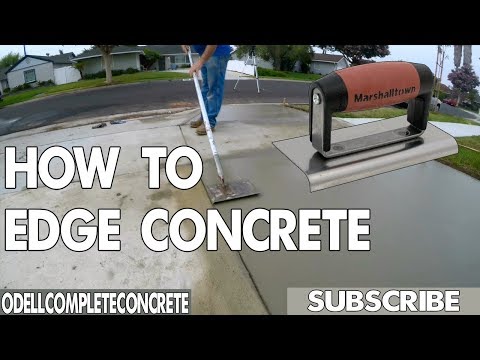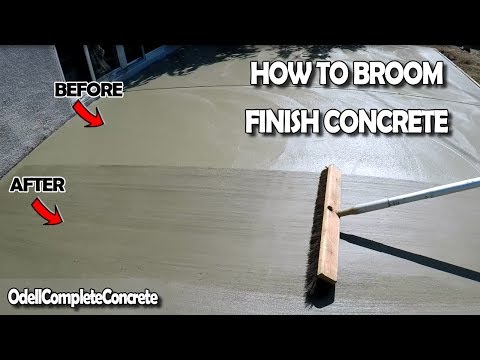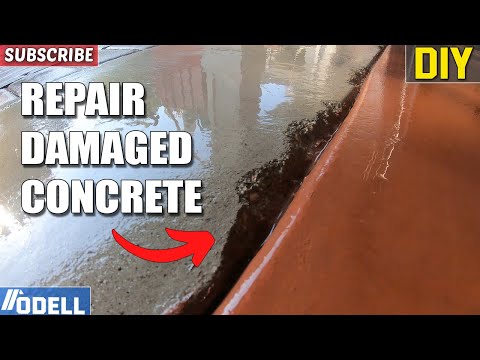Just because they call it mud doesn’t mean it behaves like dirt and water
A lot of people think that because you add water to the sand and gravel, that it is like mud (in fact, they call it mud) and water can reverse the drying process. When you mix dirt and water, you get mud. when the mud dries, you get dirt. This drying process is reversible by adding/subtracting water from the mix.
Concrete does not roll like that.
Like regular mud, water provides plasticity to the dry materials in concrete so that you can make mud pies (or concrete pies). Unlike mud, the curing process is not a drying process that can be reversed with water. It is a chemical reaction whose process can be slowed—but not reversed. #outamyway.
As soon as water is added to the mix at the plant, the chemical reactions begin and the concrete begins working against you.
Relentlessly. Becoming. Rock.
The only real question is "Will you be able to mold it into the rock you want?” #highstakes.
Concrete cures in three phases
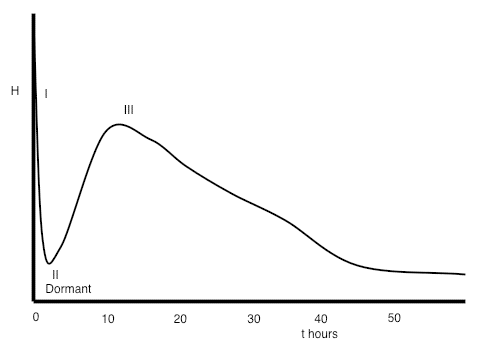
Three principal reactions occur between the time you can work concrete with a rake and when it requires a jackhammer:
- An initial high-heat phase which lasts a few minutes.
- A ‘dormant' phase which lasts a few hours.
- A curing—or hydration—phase which can basically last forever.
The sweet spot for working concrete is during the first half of phase two.
How a slab unfolds in real time
When they add water to the truck at the plant, some of the sulfates and gypsum in the Portland cement dissolve to produce an aluminate gel which reacts with sulfate to form rodlike crystals (Ettringite).
The solution is highly alkaline (the opposite of acid) and is extremely poisonous to skin. This is why you should NOT WALK IN CONCRETE WITHOUT RUBBER BOOTS. Ever.
Hydration | hī′·drā·shŭn (noun)
(construction) The chemical reaction by which a substance (such as cement) combines with water, giving off heat to form a crystalline structure in its setting and hardening.
The hydrogen in water mixes with calcium, silica, and sulfate in Portland cement to form a few different chemical products:
- Calcium silicate hydrate
- Calcium hydroxide
- Ettringite
- Monosulfate
Hydration also produces tons of heat. When water is added, the initial reactions cause heat to go through the roof. Then the mud cools.
Now the concrete enters stage 2, the dormant period where heat builds up again as the secondary reactions march forward.
There are two parts to stage 2: the part where you can pour the concrete, and the part where you better have poured it by now. It is important to pour during the part where you can pour and to eat lunch during the part where you had better have poured it by now.
During the first part (predictably), the mix is viscous and can easily be poured into forms. As the reactions continue, the viscosity of the mix turns to opposite day as the crystalline structure of the rock forms for good. If you miss your pouring window, not only do you miss lunch, but you enter the jackhammer window.
This is why concrete contractors yell so much. 
Sidebar: What is Portland cement?
The process for making Portland cement was refined in first half of the 17th century in Britain. It was called 'Portland' cement because it looked like stone mined on the Isle of Portland in England.
Portland cement is a mixture of ground limestone, clay or shale, sand, and iron ore that is then heated as much as 1600 degrees Celsius. (hot).
The intense heat breaks down the materials and recombines them into new compounds that can react with water in a crystallization process called hydration.
The first race is to bull float the slab

Continuing to mix concrete in the truck prolongs this first part of the process, which is why the RediMix trucks don't stop spinning.
But there is only so much time between when they squirt water into the drum and when it is too late to pour. So Redi-Mix trucks drive fast and pour fast.
After they pour, it is your problem, not theirs. 
As the slab is poured, the mud needs to be leveled and then the surface needs to be floated.
The bull float levels out surface humps and pockets while pushing the aggregate below the surface.
Pushing the gravel down displaces a slurry paste which moves to the top and will cure into a smooth surface.
After bull floating, it's time to wait. 
On the surface, the slab looks tranquil: light puddles slowly evaporating. Below the surface, interlocking crystals are forming as the water reacts. Don't get lulled into complacency.
Trowels smooth and polish the surface

Finishing can take place as soon as the concrete has crystallized enough to walk on while only leaving footprints on the surface 1/4 inch or so. The concrete has cured almost all the way to the top and can be polished.
A magnesium trowel is used to spread the slurry into air pockets and low spots. Following up with a steel trowel continually smooths the surface with each pass.
Magnesium trowels have a rougher surface, are lighter and more durable than steel trowels, so they are used for the initial smoothing process. Steel trowels, with their smoother surface are used to polish the concrete.
Its like moving to finer and finer grit sandpaper.
There is a time limit on this phase, too, but it is a little more fluid (sorry). If you start to lose control of the slab, you can sprinkle a little water on the surface to get it back under control.
But ...
Adding too much water weakens the concrete
The weather can speed or slow the second part of the process (the waiting part). Hot weather speeds the curing, cool weather slows it.
You can add a little water to the surface to get control of a slab if the weather takes it in the wrong direction without weakening the concrete significantly, but adding water to the mix in the truck (traffic jamb) can weaken the slab significantly. 
As a rule of thumb, for every gallon per yard of water added on the job, you lose at least 200 psi in strength. If you add 20 gallons to a 10-yard load — 2 gallons per yard — you are probably losing 400 to 500 psi.
—Journal of Light Construction
Only about a quarter of the water in the mix is actually even necessary for the hydration reaction. The rest of the water is to make the concrete viscous. Excess water evaporates as the stone pushes its way up.
The concrete continues to harden for years
Stage three is the hydration stage, where hydrogen from any water still trapped in the slab react with calcium and silica to form chemicals with long names.
Until all of the spare calcium and silica are completely hydrated, hardening continues whenever the concrete gets wet or moist—as long as there are unhydrated compounds and water, the concrete gets harder.
This is why fifty year old slabs and foundations are so unbelievably hard.
